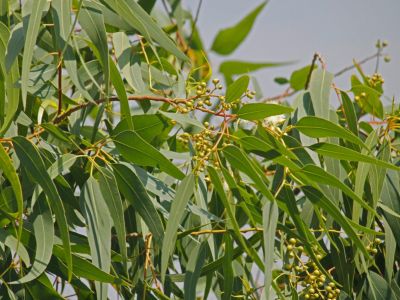How To Grow And Care For A Balsam Plant
If you're looking for a stunning and unique addition to your garden, why not consider growing some Garden Balsam (Rose Balsam)? This lovely flower is a member of the balsam family, and it's known for its frilly, ruffly petals and bright, bold colors.
Best of all, Garden Balsam is quite easy to grow and care for, so even novice gardeners can enjoy this beautiful bloom. In this post, we'll share some tips and advice for growing and caring for Garden Balsam plants, from planting and maintenance to pest control and more. Let's get started!
Plant Attributes
Garden Balsam is a tropical plant that is native to India and Myanmar. In the wild, it typically grows in moist and shady locations, such as forests and riverbanks. As a result, Garden Balsam does best in similar environments when grown as a garden plant.
As mentioned, Garden Balsam is known for its unique and striking appearance. The plants grow up to 2 feet tall and produce clusters of blooms that can range in color from deep red to pale pink, white, and lavender. These petals are frilly and ruffled, adding to the flower's charm and beauty.
Plant Care
In order to grow healthy and vibrant Garden Balsam plants, it's important to provide them with the right growing conditions. Here are some tips to help you care for your plants:
- Light: Garden Balsam prefers partly shaded areas where it can get some sun but not too much. Direct sunlight can cause the flowers to wilt and fade.
- Water: These plants like moist soil, so be sure to water them regularly. However, be careful not to overwater them, as this can lead to root rot.
- Soil: Garden Balsam does best in well-draining soil that is rich in organic matter. A good potting mix can do the trick.
- Fertilizer: Feed your Garden Balsam plants with a balanced fertilizer every two weeks during the growing season to help them stay healthy and strong.
- Humidity: Garden Balsam is a tropical plant that likes high humidity, so it's a good idea to mist your plants regularly.
Pruning
In order to keep your Garden Balsam plants looking their best, it's important to prune them regularly. Pruning can help to encourage bushier growth and prevent the plants from becoming too leggy or spindly.
To prune your Garden Balsam, simply snip off any dead, damaged, or yellowing leaves and stems as needed. You can also pinch back the growing tips to encourage branching and promote fuller growth.
Propagation
If you'd like to expand your Garden Balsam collection, you can easily propagate these plants from stem cuttings. Here's what you'll need to do:
- Take a stem cutting from your healthy Garden Balsam plant, making sure that it is straight and healthy with no disease or signs of pest infestation.
- Remove the bottom leaves, leaving only a few leaves at the top of the stem.
- Dip the cut end of the stem in rooting hormone, which will help it to grow roots.
- Plant the stem cutting in a pot filled with damp soil, and keep it in a warm, humid location until it begins to root.
- Once the cutting has rooted, you can transplant it into a larger pot or into your garden.
Potting & Repotting
Garden Balsam plants can be grown in pots or in the ground, depending on your preference. If you choose to grow yours in a pot, be sure to choose a container that is sized appropriately for the plant's root system, and that has good drainage.
To repot your Garden Balsam, simply remove it from its current container, loosen the roots gently, and transfer it to a larger pot filled with fresh potting soil. Be sure to water the plant thoroughly after repotting.
Common Pests & Plant Disease
Like all garden plants, Garden Balsam is susceptible to pest infestations and diseases. Here are some of the most common issues that you may encounter:
- Aphids: These tiny insects can suck the sap out of your plants, stunting their growth and causing damage to the leaves and flowers.
- Spider mites: These pests are difficult to see, but they can spin webs on your plants and cause yellowing foliage.
- Fungal diseases: Garden Balsam can be prone to fungal diseases like powdery mildew and leaf spot, especially if the plants are kept in humid or damp conditions.
The best way to prevent these issues is to keep your Garden Balsam plants healthy and robust. Provide them with proper care, including adequate watering and fertilization, and keep an eye out for any signs of pests or disease.
Common Problems
Despite their relative hardiness, Garden Balsam plants can still experience a variety of problems. Here are some of the most common issues that gardeners may encounter:
- Yellowing leaves: This can be a sign of overwatering, nutrient deficiencies, or pests.
- Wilting flowers: This can be caused by lack of water, too much sun exposure, or disease.
- Poor growth: This can be caused by a variety of factors, including poor soil quality, pest infestations, and overuse of fertilizer.
If you notice any of these issues, take action quickly to address them. Be sure to provide your Garden Balsam plants with adequate care, and consider using organic pest control methods to keep pests at bay.
In conclusion, Garden Balsam (Rose Balsam) is an easy-to-grow and beautiful addition to any garden. With the right care and attention, you can enjoy these stunning blooms year after year.



Post a Comment for "How To Grow And Care For A Balsam Plant"